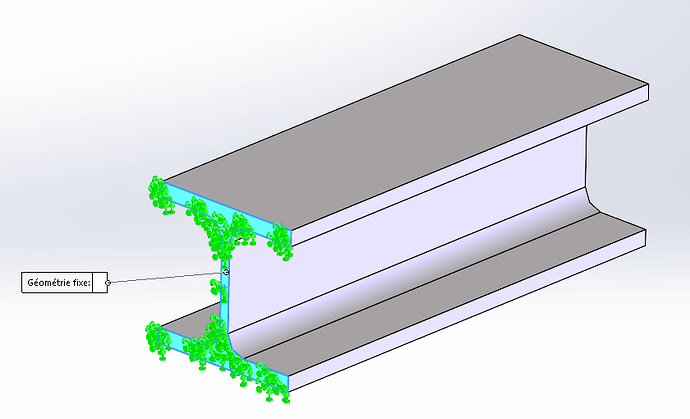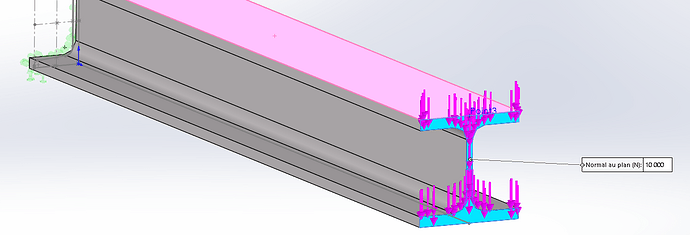Hello to you,
Allow myself a few additional information.
The different modeling solutions that are available to you are:
1- Beam mesh, this theory only applies if the length of the element is greater than 3x the largest dimension of its cross-section. A priori this is the case here, and it is also the method I will use for its simplicity/speed.
2- Shell mesh, unsuitable here because your profile is not of constant cross-section. With a square tube or rectangular tube you could possibly replace a beam with shells, which would allow you to better manage some recalcitrant connections with other bodies. But these are extra clicks that are not useful here.
3- Volume mesh, You will need a fairly fine mesh refinement, which consequently generates machine resources and additional computing time, in my opinion useless unless it allows you to " reassure " you.
4- Do a bending calculation on a corner of a table, in your case it takes less than a minute with a form and we find 89 Mpa and dust.
5- Use the " flex form" tool integrated into the toolbox, which in a few clicks will announce to you: 89.91 Mpa
Namely, that all these methods use hypotheses, so you have to be " on the right track "
And with finite elements, we only try to limit the margin of error generated by assumptions and discretization.
Be careful, in your sentence you say apply the force " on the upper face" of your HEB (a distributed force?), but in your screenshot you apply a concentrated force at the end of the beam. I'll let you check which one is the right one!
NB1: don't forget the gravity field either, which will create the weight of your element!
NB2: remote loading is very practical when you don't need to model everything and you want to avoid doing a force balance to bring the applied forces back to the place you are interested in. Here it is obviously useless.
I hope I helped you.


